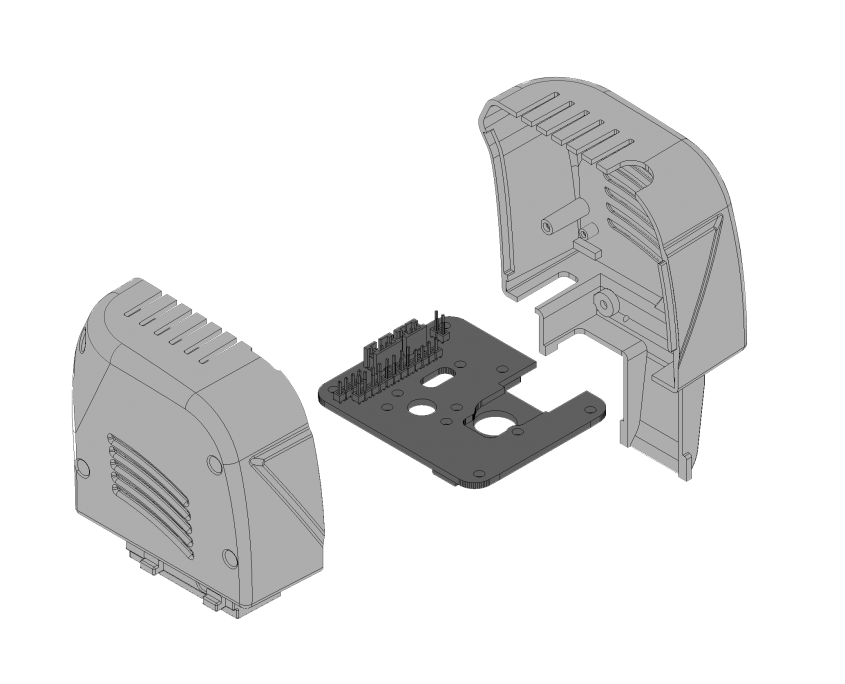Head Development Guidelines
Intro
Heads can be developed to perform different tasks and sold independently by anyone. Here there are a few guidelines that will help developers design and manufacture new modules.
The FABtotum Personal Fabricator carriage is the platform on which each and every head has to sit.
The carriage provides power, communication and other things through its connector plate. It moves on the X & Y axis. Power and communication are provided as explained in the electronicl specifications.
A retractable touch-probe, a laser line generator and a LED light are integrated in the carriage and are always available to be used during employment of custom/third-party heads, as long as they don’t interfere with each other (i.e.: the probe hitting the lower part of a custom-made head).
Bourns 70AB/Male connectors should be used on a head to work with the printer’s carriage. The operating characteristics of this type of modular contact and further information can be found here. The related .stp files for CAD provided by the manufacturer are here.
The five Bourns connectors (also used as a battery connectors for some PDAs) are placed onto the head and make contact with the PCB thanks to the lockdowns. So, when you lock the head in place, its contacts are forced against the PCB.
Head Development Kit
The Head Development Kit has been designed by the FABteam to help DIY enthusiasts who wish to develop new tools for their FABtotum. It features all the I/Os needed to develop new functionalities.
Mechanical Specifications
Each head is locked in place by friction with a locking mechanism built in the carriage.
To disengage and engage it you must push the two levers on the sides of the carriage itself.
The shape of the support plate of a head is crucial, the locking mechanism function is to hold down the head and avoid undesired movements.
Electronic Specifications
The carriage is connected to the Totumduino board and is controlled by the Raspberry Pi.
The pinout is fundamental for all operations and includes spring-loaded contacts positioned on the head mounting plate or PCB (they are called “pogo pins”).
Specifications for the contacts can be found here.
The head shape is designed to protect it from dust or accidental movements (see the “Hybrid Head” mounting plate).
The pinout specs of the head should always follow the head connector pinout.
Software Specifications
Each head as well as each optional hardware attached to the FABtotum should comply with these guidelines, safety regulations and related standards imposed by the country in which it is employed. It will also need to be marked accordingly, to ensure that safety and performance specifications are met. Please also note that FABtotum cannot be responsible or liable for use or misuse of third party heads.
Licensing heads
The use of the full documentation, including drawings and the reproduction of the FABtotum Personal Fabricator is allowed and encouraged under the Creative Commons Attribution-Noncommercial-Sharealike 3.0 Unported Licence.
Custom and third-party heads can be reproduced and sold as the creator sees fit, as long as:
- They are not marketed as FABtotum official products;
- They don’t use FABtotum logo or graphical assets;
- They don’t harm or put users in direct danger and aren’t used for illegal or questionable activities;
- They comply with the mechanical, electronic, software, safety and licensing standards outlined in this document.
Head Development Kit Resources

You can find the Head Development Kit toolchain on the FABtotum GitHub repo: https://github.com/FABtotum/.


